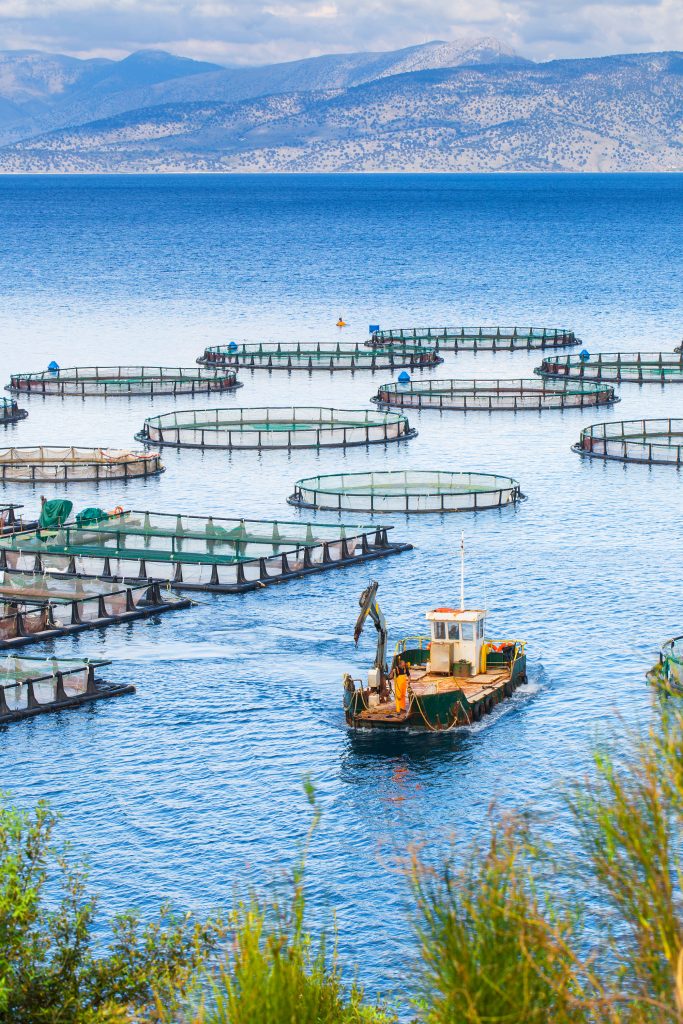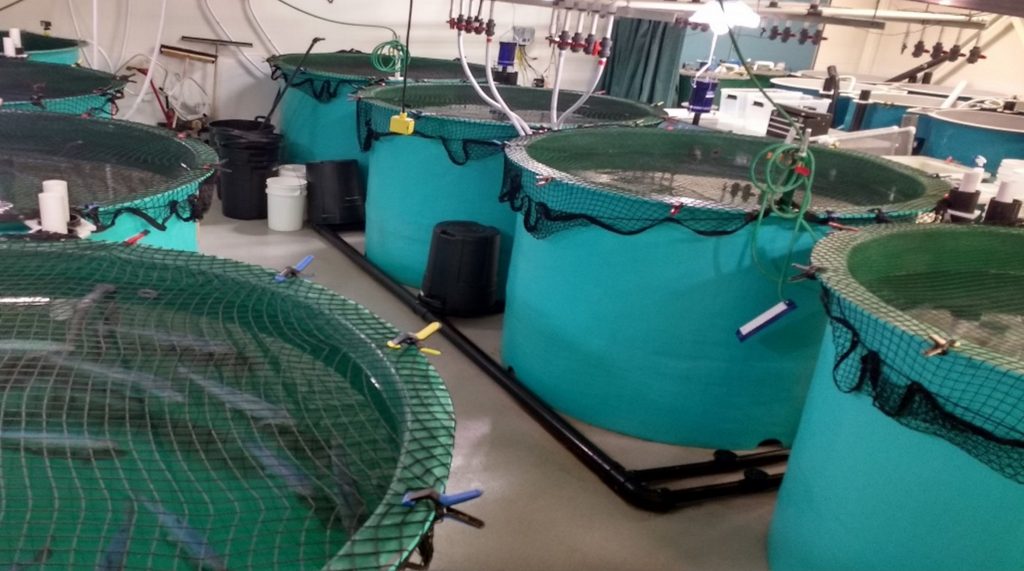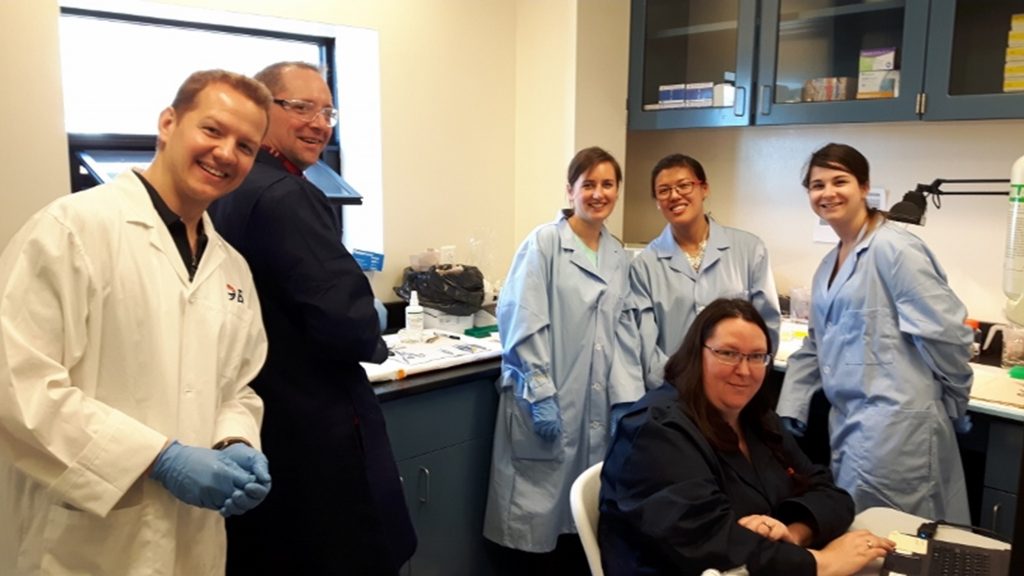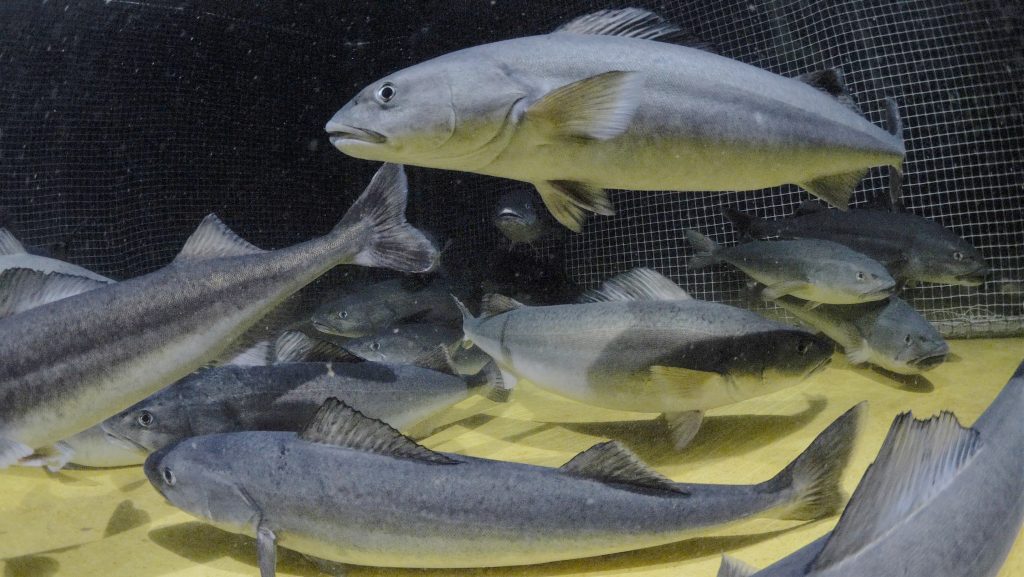Dr Kurt Gamperl – Exploring How Fish Adapt to Climate Change: Sustainable Aquaculture and Species Conservation
With the global population increasing at a considerable rate, it is becoming vitally important to improve seafood production to meet the growing demand for healthy protein. As our current fishing practices are damaging to marine ecosystems, fish farming is seen as a sustainable alternative to producing seafood, but only if it is resilient to the effects of climate change. By researching how environmental change affects fish biology, Dr Kurt Gamperl of Memorial University of Newfoundland and Labrador and his colleagues aim to make fish farming more sustainable, while ensuring global food security and allowing wild fish populations to recover.
The Future of Seafood Production
Fish are a crucial component of a nutritious diet in many parts of the world, providing a healthy protein source and playing an important role in eliminating hunger and malnutrition. With the global population expected to reach nearly 10 billion by 2050, the Food and Agriculture Organisation (FAO) of the United Nations estimates that food production will need to increase by 70%. Fish will continue to play an important role as this population growth continues.
However, overfishing has led to worrying declines in wild fish populations across the globe. Climate change is also having a damaging impact, as rising ocean temperatures and acidity can devastate marine ecosystems. Therefore, breeding, rearing and harvesting fish in captivity – known as aquaculture – represents a sustainable alternative to fishing, which greatly reduces the pressure on wild fish stocks.
Indeed, aquaculture is one of the fastest growing food sectors worldwide. According to the FAO, there has been a 527% increase in global aquaculture production since 1990. By 2030, it is estimated that about two-thirds of all seafood produced for human consumption will come from aquaculture.
In addition to impacting wild fish stocks, climate change represents a major threat to global aquaculture. This is because most aquaculture farms consist of net pens or cages in the ocean, meaning that they are not protected from the damaging effects of climate change, such as warmer temperatures, increased acidity and reduced water oxygen content (hypoxia).
Dr Kurt Gamperl and his collaborators are investigating how climate change impacts fish physiology, in an effort to mitigate the impact of environmental stressors on both farmed and wild fish. Physiology is the study of how an animal’s body functions and responds to its environment. In fish, it involves measuring factors such as their stress response, heart function, oxygen consumption, and survival under a variety of conditions. This knowledge is essential for managing fish populations, especially in aquaculture farms.
Investigating how fish are affected by climate change is critical for improving the sustainability of aquaculture operations and informing effective conservation policies. ‘Studying fundamental aspects of fish physiology can provide key information with importance for the conservation, survival and management of fishes,’ says Dr Gamperl. ‘It takes a highly integrative approach, and a large collaborative effort from all sectors, including academia, government, and industry to accomplish this.’

How Climate Change Impacts Fish Physiology
Climate change is predicted to increase global ocean temperatures by between 1°C and 3°C by the end of the 21st century – conditions that will be accompanied by low oxygen levels in the water. This is because oxygen is less soluble in warm water compared to cooler water, while the oxygen consumption of aquatic organisms increases with temperature. Such ‘hypoxic’ conditions may reduce the ability of many fish to adapt to the rapid warming caused by climate change. Coastal areas are also experiencing more severe and frequent heat waves, often at the same time as hypoxia. This means that many aquaculture farms, which are typically near the coast, may be more vulnerable to heat waves than previously thought.
Understanding the impacts of rising temperatures and the resulting low oxygen levels on fish physiology has been a central topic of Dr Gamperl’s research. In recent years, substantial progress has been made towards understanding the cardiovascular system of many fish species, but little is known about how this system adapts to high temperatures or low water oxygen levels. Therefore, Dr Gamperl and his team set out find out.
The Sablefish
To do so, they studied a species called the sablefish, which is widely distributed along the North Pacific, and is considered to have extremely flavourful meat, rich in healthy oils. As these fish are incredibly efficient at converting feed into protein, and have a low environmental impact, they are now of interest as a species to farm.
Importantly, sablefish are very tolerant of hypoxia. To respond to warming waters, fish usually increase their heart rate to quickly transport oxygen through their blood. Dr Gamperl and his colleagues were the first scientists to investigate whether previous acclimation to hypoxic waters increases the ability of a fish species to respond to rapid warming.
Interestingly, for sablefish acutely exposed to hypoxic water, the team discovered that their heart rate did not increase, but unexpectedly dropped when the temperature was raised, and this limited their upper temperature tolerance and ability to survive. Further, even fish that had previously been acclimatised to hypoxia could not increase their heart function, leaving them vulnerable to the effects of increased temperatures.
These results show that living in hypoxic waters actually decreases the sablefish’s ability to withstand heat waves, and that hypoxia can impair the heart’s response to increased temperatures. The knowledge Dr Gamperl has gained on sablefish physiology will help formulate management policies for the species, towards developing sustainable aquaculture operations.

One of Dr Gamperl’s labs – the Laboratory for Atlantic Salmon
and Climate Change Research.
Investigating Atlantic Salmon
One of the most important farmed fish species is the Atlantic salmon. For salmon that are reared in cages in coastal waters, the most significant environmental challenge is high water temperatures combined with hypoxia during the summer. In one devastating incident in 2019, nearly 2.6 million farmed salmon off the coast of Newfoundland died. These deaths were largely attributed to a sustained period of high temperature (18–19°C) and a lack of oxygen as the fish crowded together seeking cooler water temperatures.
However, as part of the Mitigating the Impacts of Climate-Related Challenges on Salmon Aquaculture Project (MICCSA; see https://genomeatlantic.ca/feature-videos/), Dr Gamperl and his team have directly examined how increases in temperature, combined with moderate hypoxia, affect the behaviour and physiology of salmon. The team found that while salmon stop feeding at temperatures above 18°C, they can tolerate temperature up to 21°C, even when exposed to moderately hypoxic waters, and that fish in sea cages can survive such conditions. This research indicates that other factors must be present, in addition to temperatures of 18–20°C and hypoxia, for large numbers of salmon deaths to occur.
The team has also developed a number of biochemical assays and molecular markers to assess the health, welfare and environmental tolerances of salmon. ‘This research can be used to assess fish health and to potentially select stocks that are more tolerant of environmental challenges,’ says Dr Gamperl. ‘This will be of great use to the salmon aquaculture industry, and potentially, to the culture of other fishes and the management of wild species.’
Coastal aquaculture farms will be increasingly affected by the changing environment. Therefore, the Atlantic salmon aquaculture industry will need to adapt to these changes to grow sustainably. The team’s research will help enable the industry to recognise, and prepare for, the effects of warming and hypoxic coastal waters caused by climate change.

A few members of Dr Gamperl’s team.
Insights into Cardiac Function
A similar species to salmon – the Arctic char – is an economically and culturally important fish for northern aboriginal peoples. This species is also making an increasingly important contribution to aquaculture in Canada and Europe. However, many experts are concerned about the ability of this species to tolerate rising temperatures. Dr Gamperl’s team has provided key insights into why Atlantic salmon are more tolerant of high water temperatures than Arctic char, and why char populations are especially vulnerable to climate change.
Cardiac performance, such as maximum heart rate and pumping capacity, are lower in char than salmon, and these differences in cardiac performance may make it more difficult for char to tolerate warmer temperatures. Impaired cardiac performance in fish can negatively impact swimming, foraging and migration, and ultimately reduce survival.
To better understand how the fish heart responds to high temperatures, the team also studied the function of mitochondria in the heart muscle cells of salmon. Mitochondria, the powerhouses of cells, are present in large numbers and are required to meet the high energy demands of the beating heart.
In their study, the researchers acclimatised one group of salmon to a temperature of 12°C and a second group to 20°C. They found that salmon that had been acclimatised to the warmer temperature had improved mitochondrial function when they were exposed to higher temperatures of up to 26°C. Further, they report that less efficient mitochondrial and heart function likely contribute to the reduced heat tolerance of char.
These fascinating insights into heart and mitochondrial function enhance our understanding of how salmonids, including salmon, trout and Arctic char, will respond to climate change. Dr Gamperl’s research will undoubtedly aid in the development of improved regulations and conservation measures to protect Arctic char.

Sablefish. CREDIT: Dr Briony Campbell (GESF)
A Work in Progress
Dr Gamperl team’s future plans include using an integrative approach to examine how maximum oxygen consumption, heart function and blood oxygen transport differ between marine fish species and how these physiological characteristics allow them to acclimatise to their environment. They will continue to study the physiology of fish with the goal of understanding how evolution has shaped the physiological systems of fish and whether fish are likely to adapt to the effects of climate change.
Collaboration across all sectors will continue to be critical in tackling the many challenges that climate change poses to both farmed and wild fish populations. Dr Gamperl’s innovative research into fish physiology and biology has raised many new and exciting questions, and will continue to have important implications for fish conservation and ensuring global food security in the face of climate change.
Short on time? watch this animation
Reference
https://doi.org/10.33548/SCIENTIA722
Meet the researcher

Dr Kurt Gamperl
Department of Ocean Sciences
Memorial University of Newfoundland and Labrador
St. John’s, Newfoundland and Labrador
Canada
Dr Kurt Gamperl earned his PhD in Biology at Dalhousie University, Nova Scotia, in 1994. He was an Assistant Professor of Biology at Portland State University before moving to Memorial University of Newfoundland and Labrador, where he is now a Professor in the Department of Ocean Sciences. Here, he is also the Associate Director of the Ocean Sciences Centre. Dr Gamperl’s integrative research program focuses on understanding how environmental and physiological variables interact to affect fish biology. His internationally recognised research has led to over 125 publications in peer-reviewed journals and over 35 research grants. In addition to his research, he teaches courses in fish biology, animal physiology and aquaculture, and supervises many graduate and undergraduate students, post-doctoral researchers and research assistants.
CONTACT
E: kgamperl@mun.ca
W: https://www.mun.ca/osc/kgamperl/bio.php
KEY COLLABORATORS
Dr Brian Dixon, University of Waterloo
Dr Doug Syme, University of Calgary
Dr Matthew Rise and Dr Javier Santander, Memorial University of Newfoundland and Labrador
Dr Ken Rodnick, Idaho State University
Dr Mark Fast, University of Prince Edward Island
Dr Roy Danzmann, University of Guelph
Danny Boyce, The Dr Joe Brown Aquatic Research Building, Memorial University of Newfoundland and Labrador
Dr Amber Garber, Huntsman Marine Science Centre
Jessi Rix, Somru BioScience
Dr Briony Campbell, Golden Eagle Sable Fish
Dr Andrew Swanson, Cooke Aquaculture
Dr Laura Braden, AquaBounty Canada Inc.
FURTHER READING
AK Gamperl, ZA Zrini, RM Sandrelli, Atlantic salmon (Salmo salar) cage-site distribution, behaviour and physiology during a Newfoundland heat wave, Frontiers in Physiology, 2021. DOI: 10.3389/fphys.2021.719594
AK Gamperl, DA Syme, Temperature effects on the contractile performance and efficiency of oxidative muscle from a eurythermal vs. a stenothermal salmonid, Journal of Experimental Biology, 2021, 224, jeb242487. DOI: 10.1242/jeb.242487
A Beemelmanns, FS Zanuzzo, RM Sandrelli, ML Rise, AK Gamperl, The Atlantic salmon’s stress- and immune-related transcriptional responses to moderate hypoxia, an incremental temperature increase, and these challenges combined, G3: Genes, Genomes, Genetics (Bethesda), 2021, Apr 7. DOI: 10.1093/g3journal/jkab102.
RHJ Leeuwis, FS Zanuzzo, EFC Peroni, AK Gamperl, Research on sablefish (Anoplopoma fimbria) suggests that limited capacity to increase heart function leaves hypoxic fish susceptible to heat waves, Proceedings of the Royal Society B, 2021, 288, 20202340.
AK Gamperl, OO Ajiboye, FS Zanuzzo, RM Sandrelli, EFC Peroni, A Beemelmanns, The impacts of increasing temperature and moderate hypoxia on the production characteristics, cardiac morphology and haematology of Atlantic Salmon (Salmo salar), Aquaculture, 2020, 519, 734874.
L Gerber, KA Clow, FC Mark, AK Gamperl, Improved mitochondrial function in salmon (Salmo salar) following high temperature acclimation suggests that there are cracks in the proverbial ‘ceiling’, Scientific Reports, 2020, 10, 21636.

Want to republish our articles?
We encourage all formats of sharing and republishing of our articles. Whether you want to host on your website, publication or blog, we welcome this. Find out more
Creative Commons Licence
(CC BY 4.0)
This work is licensed under a Creative Commons Attribution 4.0 International License. 
What does this mean?
Share: You can copy and redistribute the material in any medium or format
Adapt: You can change, and build upon the material for any purpose, even commercially.
Credit: You must give appropriate credit, provide a link to the license, and indicate if changes were made.
More articles you may like
Grandmothers: Innovation Through Tradition
Grandmother Project – Change through Culture (GMP) is an organisation dedicated to documenting the role of grandmothers and demonstrating the effectiveness of grandmother-inclusive strategies in improving the health and well-being of women, children, and adolescents. GMP’s groundbreaking work challenges conventional wisdom to transform community-based interventions in Africa and beyond, harnessing a powerful but often overlooked resource: the wisdom and influence of grandmothers.
Dr Robert Larkin | Cultivating Change to Improve Soil Health and Increase Potato Yield
Environmental quality and food production are facing the pressing challenges of climate change and global population growth. Dr Robert Larkin from the United States Department of Agriculture-Agricultural Research Service (USDA-ARS) and a team of plant scientists developed and tested a range of crop management systems to help overcome these compounding challenges. Their work is improving soil health and increasing the yield of potato crops, contributing to the future food security of nations.
Professor Giorgio Buttazzo | Artificial Intelligence and a Crossroads for Humanity
Where do we stand with artificial intelligence? Might machines take over our jobs? Can machines become conscious? Might we be harmed by robots? What is the future of humanity? Professor Giorgio Buttazzo of Scuola Superiore Sant’Anna is an expert in artificial intelligence and neural networks. In a recent publication, he provides considered insights into some of the most pressing questions surrounding artificial intelligence and humanity.
Dr Ralf Adam | New Technologies Shaping the Future of Oral Hygiene
Understanding the efficiency of various toothbrush technologies is essential for achieving optimal oral health. Dr Ralf Adam, who leads a dedicated team at Procter & Gamble in Germany, is keen to investigate the complexities of these technologies. His team have provided new insights into the best toothbrush types for plaque removal and the maintenance of gum health. By highlighting the importance of informed oral care decisions and ongoing investigations, this vital research works towards ensuring everyone can achieve a brighter, healthier smile.




